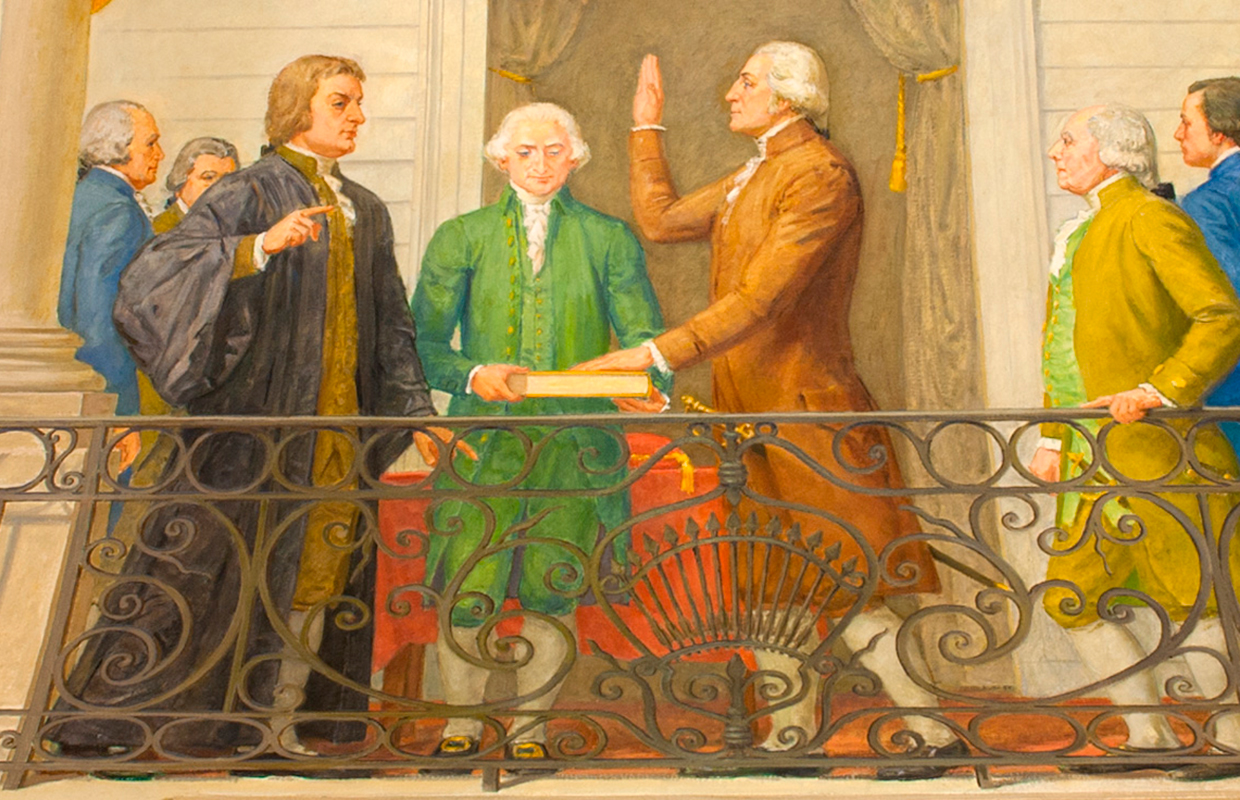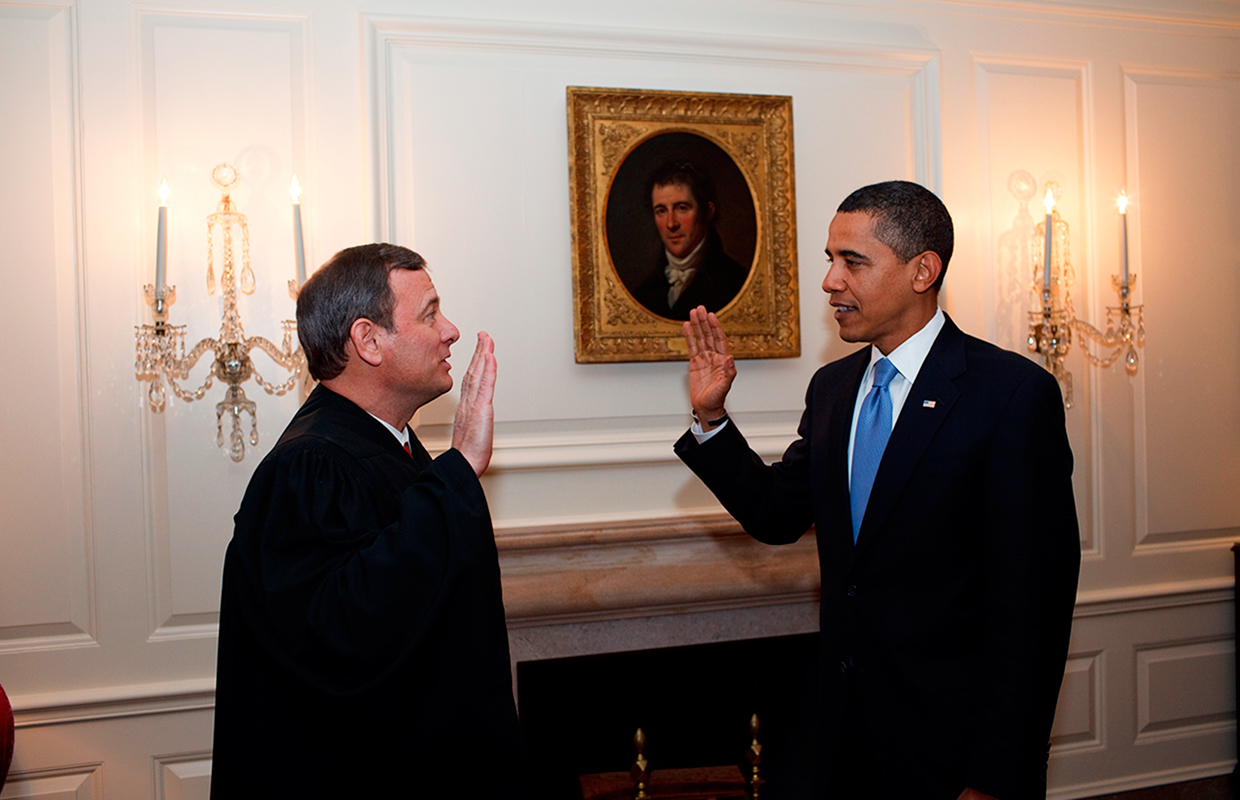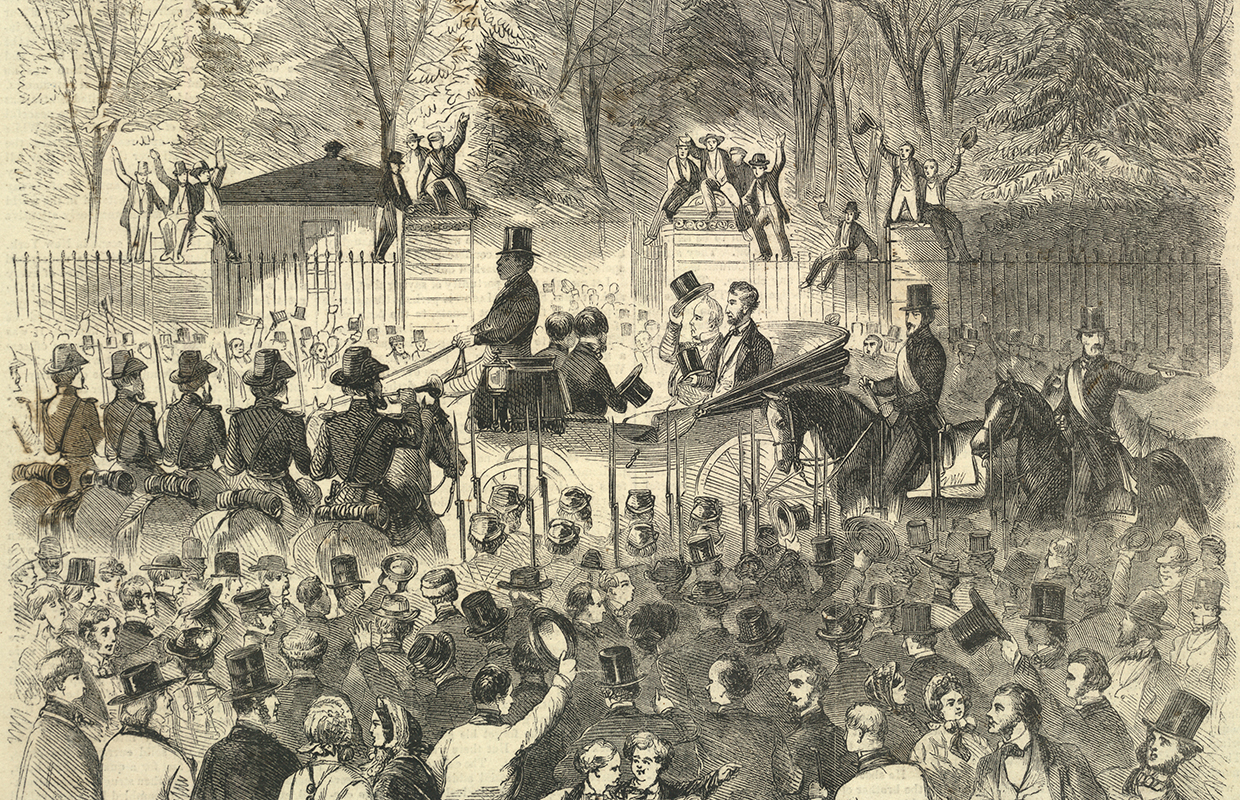On Friday, 20 January, Donald Trump will become the 45th President of the United States at his Inauguration in Washington D.C. What does the Inauguration involve, who participates, and what does it cost?
The first Inauguration was George Washington's in New York in 1789. The newly independent United States hadn't built its new federal capital yet. Thomas Jefferson's inauguration in 1801 was the first held in Washington D.C., which was still largely a building site.

Until 1937, the Inauguration was held on 4 March. The long period between the election and the inauguration is a result of the indirect system of election, leaving time for the Electoral College to meet, and the election confirmed by Congress. It means a long "lame duck" period for an outgoing administration, but also allows an incoming new president to choose his or her cabinet and have them confirmed by Congress. Since 1937, the inauguration has been held on 20 January unless that is a Sunday.
Government of the People
 Vast numbers of ordinary Americans attend the Inauguration Ceremony and Parade. Congress has distributed 250,000 free tickets to the Swearing-in Ceremony, and many more will flock to watch the parade.
Vast numbers of ordinary Americans attend the Inauguration Ceremony and Parade. Congress has distributed 250,000 free tickets to the Swearing-in Ceremony, and many more will flock to watch the parade.
The Oath

The first part of the Inauguration celebrations is the Swearing-in Ceremony, in front of the Capitol building, home of Congress. The oath is administered by the Chief Justice of the United States, the head of the judicial branch:
"I do solemnly swear that I will faithfully execute the office of president of the United States, and will to the best of my ability preserve, protect and defend the Constitution of the United States."

The Address
The new President then makes his or her Inaugural Address, setting the tone for the Presidency. Memorable quotes from previous addresses include President Kennedy in 1961, "And so my fellow Americans: ask not what your country can do for you – ask what you can do for your country." In 1933, Franklin D. Roosevelt declared, "We have nothing to fear but fear itself."
For his second inauguration in 2013, after taking the oath on Martin Luther King’s bible, President Obama underlined the continuity of the inaugural tradition: “We recall that what binds this nation together is not the colors of our skin or the tenets of our faith or the origins of our names. What makes us exceptional — what makes us American — is our allegiance to an idea, articulated in a declaration made more than two centuries ago.”
The Long and the Short
The longest Inaugural Address was by the shortest-governing President. In 1841, William Henry Harrison's speech lasted almost three hours. He had refused to wear a coat despite the cold March weather. A month later, he died of pneumonia.
Parade

After the Swearing-in ceremony, the President attends a luncheon hosted by the Joint Congressional Committee on Inaugural Ceremonies, which organises the official parts of the Inauguration. Then, the President makes his way down Pennsylvania Avenue to the White House, leading the parade. The Presidential party then watches the parade from in front of the White House.
Americans love a parade, whether for Thanksgiving or the 4th of July and an Inauguration Parade is a major event, with military contingents, marching bands, floats, citizens' groups, etc.

Having a Ball
The day concludes with a number of charity Inaugural Balls – there were ten for President Obama's first inauguration in 2009. The President spends the evening visiting each Ball.

What Does it Cost?
It is estimated that the 2017 Inauguration will cost about $250 million. That includes indirect costs like the salaries of the police and military security officers. Congress organises the official parts: the Swearing-in Ceremony and luncheon. All the rest is organised by the Presidential Inaugural Committee, chosen by the President-Elect, which also raises money from donations to help with costs. In 2009, President Obama's committee raised $53 million. This year, Mr Trump's committee is expected to raise $70 million.
Citizens can attend the Swearing-in and Parade for free, but the ball tickets are paying, generally with part of the price being donated to charity.
There are regular complaints about the cost of Inaugurations, particularly for second presidencies, but on the upside, Inaugurations provide a massive boost for the Washington, DC economy. The city's tourist office estimates that the celebration will bring several hundred million dollars in extra revenue to the city and region.
Copyright(s) :
Paul Hakimata Photography/Shutterstock, U.S. Government, Joint Congressional Committee on Inaugural Ceremonies, Library of Congress
> Presidential Inaugurations: Video
> U.S. Presidential Election Webpicks
Tag(s) : "elections" "president" "traditions" "Trump" "U.S. culture" "U.S. history" "U.S. politics" "Washington DC"





